- musician
- Alberto Williams
- Alberto Williams (23 November 1862 – 17 June 1952) was an Argentine composer, pianist, pedagogue, and conductor.
- Alberto Williams music
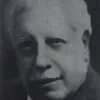
- musician
- Alexander Campbell Mackenzie
- Sir Alexander Campbell Mackenzie KCVO (22 August 1847 – 28 April 1935) was a Scottish composer, conductor and teacher best known for his oratorios, violin and piano pieces, Scottish folk music and works for the stage.
- Alexander Campbell Mackenzie music
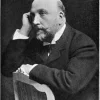
- musician
- Alexander Scriabin
- Alexander Nikolayevich Scriabin (6 January 1872 [O.S. 25 December 1871] – 27 April [O.S. 14 April] 1915) was a Russian composer and virtuoso pianist. Before 1903, Scriabin was greatly influenced by the music of Frédéric Chopin and composed in a relatively tonal, late Romantic idiom. Later, and independently of his influential contemporary, Arnold Schoenberg, Scriabin developed a much more dissonant musical language that had transcended usual tonality but was not atonal, which accorded with his personal brand of metaphysics. Scriabin found significant appeal in the concept of Gesamtkunstwerk as well as synesthesia, and associated colours with the various harmonic tones of his scale, while his colour-coded circle of fifths was also inspired by theosophy. He is often considered the main Russian Symbolist composer and a major representative of the Russian Silver Age.
- Alexander Scriabin music
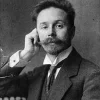
- musician
- Alfred Grunfeld
- Alfred Grünfeld (4 July 1852 in Prague – 4 January 1924 in Vienna) was an Austrian pianist and composer.
- Alfred Grunfeld music
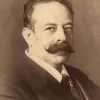
- musician
- Amedee Gastoue
- Amédée Henri Gustave Noël Gastoué (19 March 1873 – 1 June 1943) was a French musicologist and composer.
- Amedee Gastoue music
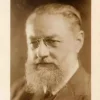
- musician
- André Grétry
- André Ernest Modeste Grétry (baptised 11 February 1741; died 24 September 1813) was a composer from the Prince-Bishopric of Liège (present-day Belgium), who worked from 1767 onwards in France and took French nationality. He is most famous for his opéras comiques.
- André Grétry music
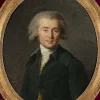
- musician
- Anton Arensky
- Anton Stepanovich Arensky (Russian: Анто́н Степа́нович Аре́нский; 12 July [O.S. 30 June] 1861 – 25 February [O.S. 12 February] 1906) was a Russian composer of Romantic classical music, a pianist and a professor of music.
- Anton Arensky music
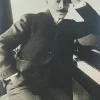
- musician
- Antonín Dvořák
- Antonín Leopold Dvořák (8 September 1841 – 1 May 1904) was a Czech composer. Dvořák frequently employed rhythms and other aspects of the folk music of Moravia and his native Bohemia, following the Romantic-era nationalist example of his predecessor Bedřich Smetana. Dvořák's style has been described as "the fullest recreation of a national idiom with that of the symphonic tradition, absorbing folk influences and finding effective ways of using them".
- Antonín Dvořák music
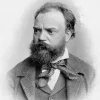
- musician
- Antonio Bazzini
- Antonio Bazzini (11 March 1818 – 10 February 1897) was an Italian violinist, composer and teacher. As a composer, his most enduring work is his chamber music, which earned him a central place in the Italian instrumental renaissance of the 19th century. However, his success as a composer was overshadowed by his reputation as one of the finest concert violinists of the nineteenth century. He also contributed to a portion of Messa per Rossini, specifically the first section of II. Sequentia, Dies Irae.
- Antonio Bazzini music
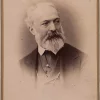
- musician
- Antonio Vivaldi
- Though Vivaldi's music was well received during his lifetime, it later declined in popularity until its vigorous revival in the first half of the 20th century. Today, Vivaldi ranks among the most popular and widely recorded of Baroque composers.
- Antonio Vivaldi music
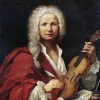
- musician
- Arcangelo Corelli
- Arcangelo Corelli (17 February 1653 – 8 January 1713) was an Italian composer and violinist of the Baroque era. His music was key in the development of the modern genres of sonata and concerto, in establishing the preeminence of the violin, and as the first coalescing of modern tonality and functional harmony.
- Arcangelo Corelli music
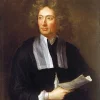
- musician
- Arthur Rubinstein
- Arthur Rubinstein (Polish: Artur Rubinstein; 28 January 1887 – 20 December 1982) was a Polish-American pianist. He is widely regarded as one of the greatest pianists of all time. He received international acclaim for his performances of the music written by a variety of composers and many regard him as one of the greatest Chopin interpreters of his time. He played in public for eight decades.
- Arthur Rubinstein music
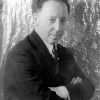
- musician
- Arthur Sullivan
- Sir Arthur Seymour Sullivan MVO (13 May 1842 – 22 November 1900) was an English composer. He is best known for 14 operatic collaborations with the dramatist W. S. Gilbert, including H.M.S. Pinafore, The Pirates of Penzance and The Mikado. His works include 24 operas, 11 major orchestral works, ten choral works and oratorios, two ballets, incidental music to several plays, and numerous church pieces, songs, and piano and chamber pieces. His hymns and songs include "Onward, Christian Soldiers" and "The Lost Chord".
- Arthur Sullivan music
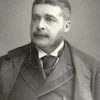
- musician
- Baldassare Galuppi
- Baldassare Galuppi (18 October 1706 – 3 January 1785) was an Italian composer, born on the island of Burano in the Venetian Republic. He belonged to a generation of composers, including Johann Adolph Hasse, Giovanni Battista Sammartini, and C. P. E. Bach, whose works are emblematic of the prevailing galant music that developed in Europe throughout the 18th century. He achieved international success, spending periods of his career in Vienna, London and Saint Petersburg, but his main base remained Venice, where he held a succession of leading appointments.
- Baldassare Galuppi music
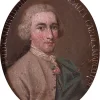
- musician
- Carl Maria von Weber
- Carl Maria Friedrich Ernst von Weber (18 or 19 November 1786 – 5 June 1826) was a German composer, conductor, virtuoso pianist, guitarist, and critic who was one of the first significant composers of the Romantic era. Best known for his operas, he was a crucial figure in the development of German Romantische Oper (German Romantic opera).
- Carl Maria von Weber music
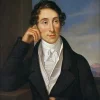
- musician
- Carl Philipp Emanuel Bach
- Carl Philipp Emanuel Bach (8 March 1714 – 14 December 1788), also formerly spelled Karl Philipp Emmanuel Bach, and commonly abbreviated C. P. E. Bach, was a German Classical period composer and musician, the fifth child and second surviving son of Johann Sebastian Bach and Maria Barbara Bach.
- Carl Philipp Emanuel Bach music
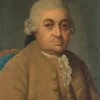
- musician
- Cécile Chaminade
- Cécile Louise Stéphanie Chaminade (8 August 1857 – 13 April 1944) was a French composer and pianist. In 1913, she was awarded the Légion d'Honneur, a first for a female composer. Ambroise Thomas said, "This is not a woman who composes, but a composer who is a woman."
- Cécile Chaminade music
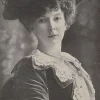
- musician
- Charles Dancla
- (Jean Baptiste) Charles Dancla (19 December 1817 – 10 October 1907) was a French violinist, composer and teacher.
- Charles Dancla music
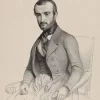
- musician
- Charles Gounod
- Charles-François Gounod (17 June 1818 – 18 October 1893), usually known as Charles Gounod, was a French composer. He wrote twelve operas, of which the most popular has always been Faust (1859); his Roméo et Juliette (1867) also remains in the international repertory. He composed a large amount of church music, many songs, and popular short pieces including his Ave Maria (an elaboration of a Bach piece) and "Funeral March of a Marionette".
- Charles Gounod music
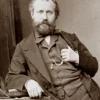
- musician
- Charles Louis Ambroise Thomas
- Charles Louis Ambroise Thomas (5 August 1811 – 12 February 1896) was a French composer and teacher, best known for his operas Mignon (1866) and Hamlet (1868).
- Charles Louis Ambroise Thomas music
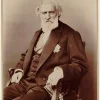
- musician
- Charles Villiers Stanford
- Sir Charles Villiers Stanford (30 September 1852 – 29 March 1924) was an Anglo-Irish composer, music teacher, and conductor of the late Romantic era. Born to a well-off and highly musical family in Dublin, Stanford was educated at the University of Cambridge before studying music in Leipzig and Berlin. He was instrumental in raising the status of the Cambridge University Musical Society, attracting international stars to perform with it.
- Charles Villiers Stanford music
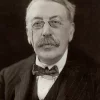
- musician
- Charles-Camille Saint-Saëns
- Charles-Camille Saint-Saëns (9 October 1835 – 16 December 1921) was a French composer, organist, conductor and pianist of the Romantic era. His best-known works include Introduction and Rondo Capriccioso (1863), the Second Piano Concerto (1868), the First Cello Concerto (1872), Danse macabre (1874), the opera Samson and Delilah (1877), the Third Violin Concerto (1880), the Third ("Organ") Symphony (1886) and The Carnival of the Animals (1886).
- Charles-Camille Saint-Saëns music
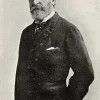
- musician
- Christian Sinding
- Christian August Sinding (11 January 1856 – 3 December 1941) was a Norwegian composer. He is best known for his lyrical work for piano Frühlingsrauschen (Rustle of Spring, 1896). He was often compared to Edvard Grieg and regarded as his successor.
- Christian Sinding music
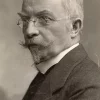
- musician
- Edvard Grieg
- Edvard Hagerup Grieg (15 June 1843 – 4 September 1907) was a Norwegian composer and pianist. He is widely considered one of the leading Romantic era composers, and his music is part of the standard classical repertoire worldwide. His use of Norwegian folk music in his own compositions brought the music of Norway to fame, as well as helping to develop a national identity, much as Jean Sibelius did in Finland and Bedřich Smetana in Bohemia.
- Edvard Grieg music
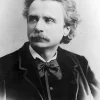
- musician
- Étienne Méhul
- Étienne Nicolas Méhul (16 November 1765 ~ 24 December 1817) was a French composer of the classical period. He was known as "the most important opera composer in France during the Revolution". He was also the first composer to be called a "Romantic". He is known particularly for his operas, written in keeping with the reforms introduced by Christoph Willibald Gluck and Wolfgang Amadeus Mozart.
- Étienne Méhul music
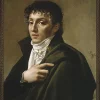
- musician
- Felix Mendelssohn
- Jakob Ludwig Felix Mendelssohn Bartholdy (3 February 1809 – 4 November 1847), born and widely known as Felix Mendelssohn, was a German composer, pianist, organist and conductor of the early Romantic period. Mendelssohn's compositions include symphonies, concertos, piano music, organ music and chamber music. His best-known works include the overture and incidental music for A Midsummer Night's Dream (which includes his "Wedding March"), the Italian Symphony, the Scottish Symphony, the oratorio St. Paul, the oratorio Elijah, the overture The Hebrides, the mature Violin Concerto and the String Octet. The melody for the Christmas carol "Hark! The Herald Angels Sing" is also his. Mendelssohn's Songs Without Words are his most famous solo piano compositions.
- Felix Mendelssohn music
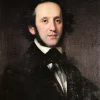
- musician
- Ferdinand Hérold
- Louis Joseph Ferdinand Herold (28 January 1791 – 19 January 1833), better known as Ferdinand Hérold was a French composer. He was celebrated in his lifetime for his operas, of which he composed more than twenty, but he also wrote ballet music, works for piano and choral pieces. He is best known today for the ballet La Fille mal gardée and the overture to the opera Zampa.
- Ferdinand Hérold music
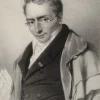
- musician
- Francesco Geminiani
- Francesco Saverio Geminiani (baptised 5 December 1687 – 17 September 1762) was an Italian violinist, composer, and music theorist. BBC Radio 3 once described him as "now largely forgotten, but in his time considered almost a musical god, deemed to be the equal of Handel and Corelli."
- Francesco Geminiani music
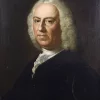
- musician
- Francesco Maria Veracini
- Francesco Maria Veracini (1 February 1690 – 31 October 1768) was an Italian composer and violinist, perhaps best known for his sets of violin sonatas. As a composer, according to Manfred Bukofzer, "His individual, if not subjective, style has no precedent in baroque music and clearly heralds the end of the entire era", while Luigi Torchi maintained that "he rescued the imperiled music of the eighteenth century", His contemporary, Charles Burney, held that "he had certainly a great share of whim and caprice, but he built his freaks on a good foundation, being an excellent contrapuntist". The asteroid 10875 Veracini was named after him.
- Francesco Maria Veracini music
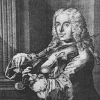
- musician
- François-Adrien Boieldieu
- François-Adrien Boieldieu (16 December 1775 – 8 October 1834) was a French composer, mainly of operas, often called "the French Mozart". His date of birth was also cited as December 15 by his biographer and writer Lucien Augé de Lassus (b. 1841) and as September 15 by some local press releases.
- François-Adrien Boieldieu music
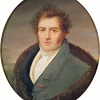
- musician piano
- Franz Liszt
- Franz Liszt (22 October 1811 – 31 July 1886) was a Hungarian composer, virtuoso pianist and teacher of the Romantic period. With a diverse body of work spanning more than six decades, he is considered to be one of the most prolific and influential composers of his era and remains one of the most popular composers in modern concert piano repertoire.
- Franz Liszt music
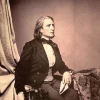
- musician piano
- Franz Schubert
- Franz Peter Schubert (31 January 1797 – 19 November 1828) was an Austrian composer of the late Classical and early Romantic eras. Despite his short lifetime, Schubert left behind a vast oeuvre, including more than 600 secular vocal works (mainly lieder), seven complete symphonies, sacred music, operas, incidental music, and a large body of piano and chamber music. His major works include "Erlkönig" (D. 328), the Piano Quintet in A major, D. 667 (Trout Quintet), the Symphony No. 8 in B minor, D. 759 (Unfinished Symphony), the "Great" Symphony No. 9 in C major, D. 944, the String Quintet (D. 956), the three last piano sonatas (D. 958–960), the opera Fierrabras (D. 796), the incidental music to the play Rosamunde (D. 797), and the song cycles Die schöne Müllerin (D. 795) and Winterreise (D. 911).
- Franz Schubert music
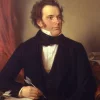
- musician
- Frédéric Chopin
- Frédéric François Chopin (born Fryderyk Franciszek Chopin; 1 March 1810 – 17 October 1849) was a Polish composer and virtuoso pianist of the Romantic period, who wrote primarily for solo piano. He has maintained worldwide renown as a leading musician of his era, one whose "poetic genius was based on a professional technique that was without equal in his generation".
- Frédéric Chopin music
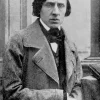
- musician
- Fromental Halévy
- Jacques-François-Fromental-Élie Halévy, usually known as Fromental Halévy (27 May 1799 – 17 March 1862), was a French composer. He is known today largely for his opera La Juive.
- Fromental Halévy music
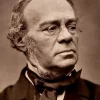
- musician
- Georg Philipp Telemann
- Georg Philipp Telemann (24 March [O.S. 14 March] 1681 – 25 June 1767) was a German Baroque composer and multi-instrumentalist. Almost completely self-taught in music, he became a composer against his family's wishes. After studying in Magdeburg, Zellerfeld, and Hildesheim, Telemann entered the University of Leipzig to study law, but eventually settled on a career in music. He held important positions in Leipzig, Sorau, Eisenach, and Frankfurt before settling in Hamburg in 1721, where he became musical director of that city's five main churches. While Telemann's career prospered, his personal life was always troubled: his first wife died less than two years after their marriage, and his second wife had extramarital affairs and accumulated a large gambling debt before leaving him.
- Georg Philipp Telemann music
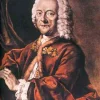
- musician
- George Frideric Handel
- George Frideric (or Frederick) Handel (23 February 1685 – 14 April 1759) was a German-British Baroque composer well known for his operas, oratorios, anthems, concerti grossi, and organ concertos. Handel received his training in Halle and worked as a composer in Hamburg and Italy before settling in London in 1712, where he spent the bulk of his career and became a naturalised British subject in 1727. He was strongly influenced both by the middle-German polyphonic choral tradition and by composers of the Italian Baroque. In turn, Handel's music forms one of the peaks of the "high baroque" style, bringing Italian opera to its highest development, creating the genres of English oratorio and organ concerto, and introducing a new style into English church music. He is consistently recognized as one of the greatest composers of his age.[5][6]
- George Frideric Handel music
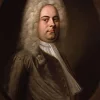
- musician
- George Gershwin
- George Gershwin (September 26, 1898 – July 11, 1937) was an American composer and pianist whose compositions spanned popular, jazz and classical genres. Among his best-known works are the orchestral compositions Rhapsody in Blue (1924) and An American in Paris (1928), the songs "Swanee" (1919) and "Fascinating Rhythm" (1924), the jazz standards "Embraceable You" (1928) and "I Got Rhythm" (1930), and the opera Porgy and Bess (1935), which included the hit "Summertime".
- George Gershwin music
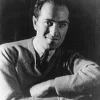
- musician
- Georges Bizet
- Georges Bizet (né Alexandre César Léopold Bizet; 25 October 1838 – 3 June 1875) was a French composer of the Romantic era. Best known for his operas in a career cut short by his early death, Bizet achieved few successes before his final work, Carmen, which has become one of the most popular and frequently performed works in the entire opera repertoire.
- Georges Bizet music
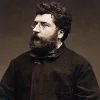
- musician
- German Galynin
- German Germanovich Galynin (30 March 1922, in Tula, Russia – 18 June 1966, in Moscow) was a Russian composer, student, and continuer of the Shostakovich and Myaskovsky line in Soviet classic music.
- German Galynin music
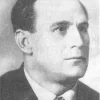
- musician
- Giacomo Meyerbeer
- Giacomo Meyerbeer[n 1] (born Jakob Liebmann Beer; 5 September 1791 – 2 May 1864) was a German opera composer, "the most frequently performed opera composer during the nineteenth century, linking Mozart and Wagner". With his 1831 opera Robert le diable and its successors, he gave the genre of grand opera 'decisive character'. Meyerbeer's grand opera style was achieved by his merging of German orchestra style with Italian vocal tradition. These were employed in the context of sensational and melodramatic libretti created by Eugène Scribe and were enhanced by the up-to-date theatre technology of the Paris Opéra. They set a standard which helped to maintain Paris as the opera capital of the nineteenth century.
- Giacomo Meyerbeer music
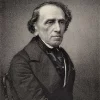
- musician
- Gustav Holst
- Gustav Theodore Holst (born Gustavus Theodore von Holst; 21 September 1874 – 25 May 1934) was an English composer, arranger and teacher. Best known for his orchestral suite The Planets, he composed many other works across a range of genres, although none achieved comparable success. His distinctive compositional style was the product of many influences, Richard Wagner and Richard Strauss being most crucial early in his development. The subsequent inspiration of the English folksong revival of the early 20th century, and the example of such rising modern composers as Maurice Ravel, led Holst to develop and refine an individual style.
- Gustav Holst music
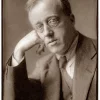
- musician
- Hans Sitt
- Hans Sitt (born Jan Hanuš Sitt on 21 September 1850, Prague – 10 March 1922, Leipzig), was a Bohemian violinist, violist, teacher, and composer. During his lifetime, he was regarded as one of the foremost teachers of violin. Most of the orchestras and conservatories of Europe and North America then sported personnel who numbered among his students.
- Hans Sitt music
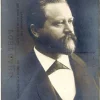
- musician
- Henry Eccles
- Henry (Henri) Eccles (1670–1742) was an English composer.
- Henry Eccles music
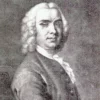
- musician
- Henry Purcell
- Henry Purcell (c. 10 September 1659 – 21 November 1695) was an English composer of Baroque music. Purcell's musical style was uniquely English, although it incorporated Italian and French elements. Generally considered among the greatest English opera composers, Purcell is often linked with John Dunstaple and William Byrd as England's most important early music composers. No later native-born English composer approached his fame until Edward Elgar, Ralph Vaughan Williams, Gustav Holst, William Walton and Benjamin Britten in the 20th century.
- Henry Purcell music
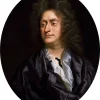
- musician
- Hubert Parry
- Sir Charles Hubert Hastings Parry, 1st Baronet (27 February 1848 – 7 October 1918) was an English composer, teacher and historian of music. Born in Richmond Hill in Bournemouth, Parry's first major works appeared in 1880. As a composer he is best known for the choral song "Jerusalem", his 1902 setting for the coronation anthem "I was glad", the choral and orchestral ode Blest Pair of Sirens, and the hymn tune "Repton", which sets the words "Dear Lord and Father of Mankind". His orchestral works include five symphonies and a set of Symphonic Variations. He also composed the music for Ode to Newfoundland, the Newfoundland and Labrador provincial anthem (and former national anthem).
- Hubert Parry music
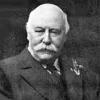
- musician
- Ignacio Cervantes
- Ignacio Cervantes Kawanag (Havana, 31 July 1847 – Havana, 29 April 1905) was a Cuban pianist and composer. He was influential in the creolization of Cuban music.
- Ignacio Cervantes music
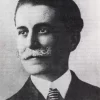
- musician
- Ignacy Jan Paderewski
- Ignacy Jan Paderewski (18 November [O.S. 6 November] 1860 – 29 June 1941) was a Polish pianist, composer and politician who was a spokesman for Polish independence. In 1919, he was the nation's prime minister and foreign minister during which he signed the Treaty of Versailles, which ended World War I.
- Ignacy Jan Paderewski music
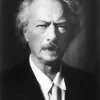
- musician
- Jean Sibelius
- Jean Sibelius (born Johan Julius Christian Sibelius; 8 December 1865 – 20 September 1957) was a Finnish composer of the late Romantic and early-modern periods. He is widely regarded as his country's greatest composer, and his music is often credited with having helped Finland develop a national identity during its struggle for independence from Russia.
- Jean Sibelius music
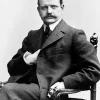
- musician
- Jean-Baptiste Lully
- Jean-Baptiste Lully (born Giovanni Battista Lulli, Italian: [dʒoˈvanni batˈtista ˈlulli]; 28 November [O.S. 18 November] 1632 – 22 March 1687) was an Italian-born French composer, guitarist, violinist, and dancer who is considered a master of the French Baroque music style. Best known for his operas, he spent most of his life working in the court of Louis XIV of France and became a French subject in 1661. He was a close friend of the playwright Molière, with whom he collaborated on numerous comédie-ballets, including L'Amour médecin, George Dandin ou le Mari confondu, Monsieur de Pourceaugnac, Psyché and his best known work, Le Bourgeois gentilhomme.
- Jean-Baptiste Lully music
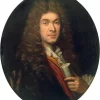
- musician
- Jean-Philippe Rameau
- Jean-Philippe Rameau (25 September 1683 – 12 September 1764) was a French composer and music theorist. Regarded as one of the most important French composers and music theorists of the 18th century, he replaced Jean-Baptiste Lully as the dominant composer of French opera and is also considered the leading French composer of his time for the harpsichord, alongside François Couperin.
- Jean-Philippe Rameau music
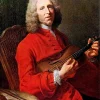
- musician
- Johan Halvorsen
- Johan Halvorsen (15 March 1864 – 4 December 1935) was a Norwegian composer, conductor and violinist.
- Johan Halvorsen music
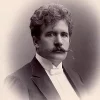
- musician
- Johann Baptist Georg Neruda
- Johann Baptist Georg Neruda (c. 1708 – c. 1780) was a Czech classical composer, violinist and cellist.
- Johann Baptist Georg Neruda music
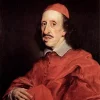
- musician
- Johann Nepomuk Hummel
- Johann Nepomuk Hummel (14 November 1778 – 17 October 1837) was an Austrian composer and virtuoso pianist. His music reflects the transition from the Classical to the Romantic musical era. He was a pupil of Mozart, Salieri and Clementi. He also knew Beethoven and Schubert.
- Johann Nepomuk Hummel music
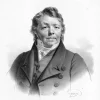
- musician
- Johann Pachelbel Organ
- Pachelbel's music enjoyed enormous popularity during his lifetime; he had many pupils and his music became a model for the composers of south and central Germany. Today, Pachelbel is best known for the **Canon in D**, the only canon he wrote . although a true canon at the unison in three parts, it is often regarded more as a passacaglia, and it is in this mode that it has been arranged and transcribed for many different media. In addition to the canon, his most well-known works include the Chaconne in F minor, the Toccata in E minor for organ, and the Hexachordum Apollinis, a set of keyboard variations.
- Johann Pachelbel Organ music
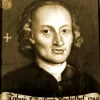
- musician
- Johann Sebastian Bach
- Johann Sebastian Bach was a noted German composer, keyboardist, and violinist; he is regarded as a leading composer of the Baroque style. His works (such as the Brandenburg Concertos) are known for their technical depth and artistic beauty. He was born on or near March 21 1685 and died on July 28, 1750.
- Johann Sebastian Bach music
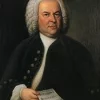
- musician
- Johann Strauss I
- Johann Baptist Strauss I (14 March 1804 – 25 September 1849), also known as Johann Strauss Sr., the Elder or the Father (German: Johann Strauß Vater), was an Austrian composer of the Romantic Period. He was famous for his light music, namely waltzes, polkas, and galops, which he popularized alongside Joseph Lanner, thereby setting the foundations for his sons—Johann, Josef and Eduard—to carry on his musical dynasty. He is best known for his composition of the Radetzky March (named after Joseph Radetzky von Radetz).
- Johann Strauss I music
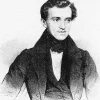
- musician
- John Field
- John Field (26 July 1782, Dublin – 23 January 1837, Moscow) was an Irish pianist, composer, and teacher widely credited as the inventor of the nocturne. While other composers were writing in a similar style at this time, Field was the first to use the term 'Nocturne' specifically to apply to a character piece featuring a cantabile melody over an arpeggiated accompaniment.
- John Field music
- musician
- Josef Rheinberger
- Josef Gabriel Rheinberger (17 March 1839 – 25 November 1901) was a Liechtensteiner organist and composer, residing in Bavaria for most of his life.
- Josef Rheinberger music
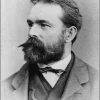
- musician piano
- Joseph Haydn
- Franz Joseph Haydn[a] (31 March[b] 1732 – 31 May 1809) was an Austrian composer of the Classical period. He was instrumental in the development of chamber music such as the string quartet and piano trio. His contributions to musical form have led him to be called "Father of the Symphony" and "Father of the String Quartet".
- Joseph Haydn music
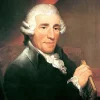
- musician
- Joseph Joachim Raff
- Joseph Joachim Raff (27 May 1822 – 24 or 25 June 1882) was a German-Swiss composer, pedagogue and pianist.
- Joseph Joachim Raff music
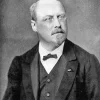
- musician
- Josquin des Prez
- Josquin Lebloitte dit des Prez (c. 1450–1455 – 27 August 1521) was a composer of High Renaissance music, who is variously described as French or Franco-Flemish. Considered one of the greatest composers of the Renaissance, he was a central figure of the Franco-Flemish School and had a profound influence on the music of 16th-century Europe. Building on the work of his predecessors Guillaume Du Fay and Johannes Ockeghem, he developed a complex style of expressive—and often imitative—movement between independent voices (polyphony) which informs much of his work. He further emphasized the relationship between text and music, and departed from the early Renaissance tendency towards lengthy melismatic lines on a single syllable, preferring to use shorter, repeated motifs between voices. Josquin was a singer, and his compositions are mainly vocal. They include masses, motets and secular chansons.
- Josquin des Prez music
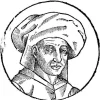
- musician
- Jules Massenet
- Jules Émile Frédéric Massenet (12 May 1842 – 13 August 1912) was a French composer of the Romantic era best known for his operas, of which he wrote more than thirty. The two most frequently staged are Manon (1884) and Werther (1892). He also composed oratorios, ballets, orchestral works, incidental music, piano pieces, songs and other music.
- Jules Massenet music
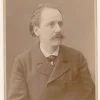
- musician
- Léo Delibes
- Clément Philibert Léo Delibes (21 February 1836 – 16 January 1891) was a French Romantic composer, best known for his ballets and operas. His works include the ballets Coppélia (1870) and Sylvia (1876) and the opera Lakmé (1883), which includes the well-known "Flower Duet".
- Léo Delibes music
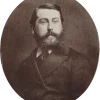
- musician
- Louis-Hector Berlioz
- Louis-Hector Berlioz (11 December 1803 – 8 March 1869) was a French Romantic composer and conductor. His output includes orchestral works such as the Symphonie fantastique and Harold in Italy, choral pieces including the Requiem and L'Enfance du Christ, his three operas Benvenuto Cellini, Les Troyens and Béatrice et Bénédict, and works of hybrid genres such as the "dramatic symphony" Roméo et Juliette and the "dramatic legend" La Damnation de Faust.
- Louis-Hector Berlioz music
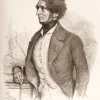
- musician
- Ludwig van Beethoven
- Beethoven is one of the most famous and influential classical composers who spanned the transition between Classical and Romantic eras in Western music. He produced a large body of work including nine symphonies; he's also noted for his chamber music and piano sonatas. It's been said that “Mozart's music was God's laughter ... but Beethoven's music was God's anger!” He died on March 26, 1827 during storm; his companion reported that a loud peal of thunder crashed at the instant of his death.
- Ludwig van Beethoven music
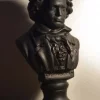
- musician piano
- Maurice Ravel
- Joseph Maurice Ravel (7 March 1875 – 28 December 1937) was a French composer, pianist and conductor. He is often associated with Impressionism along with his elder contemporary Claude Debussy, although both composers rejected the term. In the 1920s and 1930s Ravel was internationally regarded as France's greatest living composer.
- Maurice Ravel music
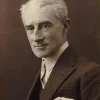
- musician
- Mauro Giuliani
- Mauro Giuseppe Sergio Pantaleo Giuliani (27 July 1781 – 8 May 1829) was an Italian guitarist, cellist, singer, and composer. He was a leading guitar virtuoso of the early 19th century.
- Mauro Giuliani music

- musician
- Max Christian Friedrich Bruch
- Max Bruch (6 January 1838 – 2 October 1920) was a German Romantic composer, violinist, teacher, and conductor who wrote more than 200 works, including three violin concertos, the first of which has become a prominent staple of the standard violin repertoire.
- Max Christian Friedrich Bruch music
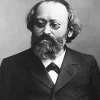
- musician
- Michael William Balfe
- Michael William Balfe (15 May 1808 – 20 October 1870) was an Irish composer, best remembered for his operas, especially The Bohemian Girl. After a short career as a violinist, Balfe pursued an operatic singing career, while he began to compose. In a career spanning more than 40 years, he composed at least 29 operas, almost 250 songs, several cantatas and other works. He was also a noted conductor, directing Italian Opera at Her Majesty's Theatre for seven years, among other conducting posts.
- Michael William Balfe music
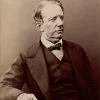
- musician
- Mikhail Glinka
- Mikhail Ivanovich Glinka (1 June [O.S. 20 May] 1804 – 15 February [O.S. 3 February] 1857) was the first Russian composer to gain wide recognition within his own country and is often regarded as the fountainhead of Russian classical music. His compositions were an important influence on Russian composers, notably the members of The Five, who produced a distinctive Russian style of music.
- Mikhail Glinka music
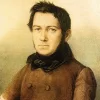
- musician
- Niccolò Paganini
- Niccolò (or Nicolò) Paganini (27 October 1782 – 27 May 1840) was an Italian violinist and composer. He was the most celebrated violin virtuoso of his time, and left his mark as one of the pillars of modern violin technique. His 24 Caprices for Solo Violin Op. 1 are among the best known of his compositions and have served as an inspiration for many prominent composers.
- Niccolò Paganini music
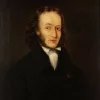
- musician piano
- Niels Gade
- Niels Wilhelm Gade (22 February 1817 – 21 December 1890) was a Danish composer, conductor, violinist, organist and teacher. Together with Johan Peter Emilius Hartmann, he was the leading Danish musician of his day, in the period known as the Danish Golden Age.
- Niels Gade music
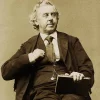
- musician
- Nikolai Rimsky-Korsakov
- Nikolai Andreyevich Rimsky-Korsakov (18 March 1844 – 21 June 1908) was a Russian composer, a member of the group of composers known as The Five. He was a master of orchestration. His best-known orchestral compositions—Capriccio Espagnol, the Russian Easter Festival Overture, and the symphonic suite Scheherazade—are staples of the classical music repertoire, along with suites and excerpts from some of his 15 operas. Scheherazade is an example of his frequent use of fairy-tale and folk subjects.
- Nikolai Rimsky-Korsakov music
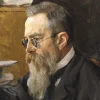
- musician
- Orlande de Lassus
- Orlande de Lassus (various other names; probably c. 1532 – 14 June 1594) was a composer of the late Renaissance. The chief representative of the mature polyphonic style in the Franco-Flemish school, Lassus stands with Giovanni Pierluigi da Palestrina and Tomás Luis de Victoria as the leading composers of the later Renaissance. Immensely prolific, his music varies considerably in style and genres, which gave him unprecedented popularity throughout Europe.
- Orlande de Lassus music
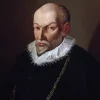
- musician
- Ossip Gabrilowitsch
- Ossip Salomonovich Gabrilowitsch (Осип Сoломонович Габрилович, Osip Solomonovich Gabrilovich; he used the German transliteration Gabrilowitsch in the West) (7 February [O.S. 26 January] 1878 – 14 September 1936) was a Russian-born American pianist, conductor and composer.
- Ossip Gabrilowitsch music
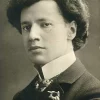
- musician
- Peter Carl Goldmark
- Peter Carl Goldmark (born Péter Károly Goldmark; December 2, 1906 – December 7, 1977) was a Hungarian-American engineer who, during his time with Columbia Records, was instrumental in developing the long-playing microgroove 331⁄3 rpm phonograph disc, the standard for incorporating multiple or lengthy recorded works on a single disc for two generations. The LP was introduced by Columbia's Goddard Lieberson in 1948. Lieberson was later president of Columbia Records from 1956–71 and 1973–75. According to György Marx, he was one of The Martians.
- Peter Carl Goldmark music
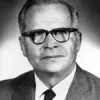
- musician
- Pyotr Ilyich Tchaikovsky
- Pyotr Ilyich Tchaikovsky (7 May 1840 – 6 November 1893) was a Russian composer of the Romantic period. He was the first Russian composer whose music would make a lasting impression internationally. Tchaikovsky wrote some of the most popular concert and theatrical music in the current classical repertoire, including the ballets Swan Lake and The Nutcracker, the 1812 Overture, his First Piano Concerto, Violin Concerto, the Romeo and Juliet Overture-Fantasy, several symphonies, and the opera Eugene Onegin.
- Pyotr Ilyich Tchaikovsky music
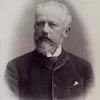
- musician
- Robert Alexander Schumann
- Robert Schumann (8 June 1810 – 29 July 1856) was a German composer, pianist, and influential music critic. He is widely regarded as one of the greatest composers of the Romantic era. Schumann left the study of law, intending to pursue a career as a virtuoso pianist. His teacher, Friedrich Wieck, a German pianist, had assured him that he could become the finest pianist in Europe, but a hand injury ended this dream. Schumann then focused his musical energies on composing.
- Robert Alexander Schumann music
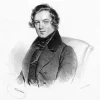
- musician
- Robert Franz
- Robert Franz Julius Knauth (28 June 1815 – 24 October 1892) was a German composer, mainly of lieder.
- Robert Franz music
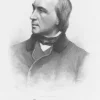
- musician
- Roy Lamont Smith
- Roy Lamont Smith was born on March 4, 1865 in Fremont, Nebraska and died on February 6, 1946 in San Diego, California. He was a pianist and studied at the Hershey School of Musical Art in Chicago (1883). He taught music in Fremont (1891) and was a professor of music at the Cadek Conservatory of Music in Chattanooga (1904-1942). He wrote various songs for voice and piano accompaniment, including one of the Tennessee state songs "My Homeland, Tennessee" (1925).
- Roy Lamont Smith music
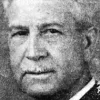
- musician piano
- Sergei Rachmaninoff
- Sergei Vasilyevich Rachmaninoff (1 April [O.S. 20 March] 1873 – 28 March 1943) was a Russian composer, virtuoso pianist, and conductor. Rachmaninoff is widely considered one of the finest pianists of his day and, as a composer, one of the last great representatives of Romanticism in Russian classical music. Early influences of Tchaikovsky, Rimsky-Korsakov, and other Russian composers gave way to a thoroughly personal idiom notable for its song-like melodicism, expressiveness and rich orchestral colours. The piano is featured prominently in Rachmaninoff's compositional output and he made a point of using his skills as a performer to fully explore the expressive and technical possibilities of the instrument.
- Sergei Rachmaninoff music
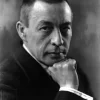
- musician
- Walter Gieseking
- Walter Wilhelm Gieseking (5 November 1895 – 26 October 1956) was a French-born German pianist and composer. Gieseking was renowned for his subtle touch, pedaling, and dynamic control—particularly in the music of Debussy and Ravel; he made integral recordings of all their published works which were extant during his life. He also recorded most of Mozart's solo piano works.
- Walter Gieseking music
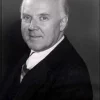
- musician
- Wilhelm Richard Wagner
- Wilhelm Richard Wagner (22 May 1813 – 13 February 1883) was a German composer, theatre director, polemicist, and conductor who is chiefly known for his operas (or, as some of his mature works were later known, "music dramas"). Unlike most opera composers, Wagner wrote both the libretto and the music for each of his stage works. Initially establishing his reputation as a composer of works in the romantic vein of Carl Maria von Weber and Giacomo Meyerbeer, Wagner revolutionised opera through his concept of the Gesamtkunstwerk ("total work of art"), by which he sought to synthesise the poetic, visual, musical and dramatic arts, with music subsidiary to drama. He described this vision in a series of essays published between 1849 and 1852. Wagner realised these ideas most fully in the first half of the four-opera cycle Der Ring des Nibelungen (The Ring of the Nibelung).
- Wilhelm Richard Wagner music
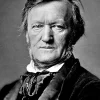
- musician
- William Byrd
- William Byrd (/bɜːrd/; c. 1540 – 4 July 1623) was an English composer of late Renaissance music. Considered among the greatest composers of the Renaissance, he had a profound influence on composers both from his native England and on the continent. He is often coupled with John Dunstaple and Henry Purcell as England's most important early music composers.
- William Byrd music
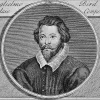
- musician
- William Sterndale Bennett
- Sir William Sterndale Bennett (13 April 1816 – 1 February 1875) was an English composer, pianist, conductor and music educator. At the age of ten Bennett was admitted to the London Royal Academy of Music (RAM), where he remained for ten years. By the age of twenty, he had begun to make a reputation as a concert pianist, and his compositions received high praise. Among those impressed by Bennett was the German composer Felix Mendelssohn, who invited him to Leipzig. There Bennett became friendly with Robert Schumann, who shared Mendelssohn's admiration for his compositions. Bennett spent three winters composing and performing in Leipzig.
- William Sterndale Bennett music
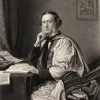
- musician
- Wolfgang Amadeus Mozart
- Wolfgang Amadeus Mozart (27 January 1756 – 5 December 1791) was a prolific and influential composer of the Classical period. Despite his short life, his rapid pace of composition resulted in more than 800 works of virtually every genre of his time. Many of these compositions are acknowledged as pinnacles of the symphonic, concertante, chamber, operatic, and choral repertoire. Mozart is widely regarded as among the greatest composers in the history of Western music, with his music admired for its "melodic beauty, its formal elegance and its richness of harmony and texture".
- Wolfgang Amadeus Mozart music
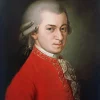
Music styles
Messiah (Handel)
Messiah (HWV 56) is an English-language oratorio composed in 1741 by George Frideric Handel. The text was compiled from the King James Bible and the Coverdale Psalter by Charles Jennens. It was first ...
Read MoreMost Recorded Irish Tunes
These are the most recorded Irish Tunes as rated by <a href="http://www.irishtune.info" style="color: white">Irish Tune Info!</a>. Quite often, a tune is known by more than one name -- so you may reco...
Read MoreO'Neill's Waifs and Strays
"O'Neill's Waifs and Strays of Gaelic Melody" is a classic collection of around 350 Celtic session tunes. These treble clef tunes are suitable for fiddle, flute, trumpet, clarinet, or any other treble...
Read MoreThe Preludes, A Symphonic
Les préludes ("Preludes" or "The Beginnings"), S.97, is the third of <a href="/music/liszt" style="color:white">Franz Liszt</a>'s thirteen symphonic poems. The music was composed between 1845–54, and ...
Read MoreMusic pieces
This section is like a treasure trove of melodies waiting to be unlocked. Each piece has its own unique story, from classical masterpieces to modern pop hits, all written down in notation for musicians to play and perform. Whether you're a beginner or a pro, you can browse the list organized by instrument, genre, or difficulty level to find the perfect piece for you. With the sheet music in hand, you can start practicing and bringing the music to life. It's a fantastic resource for music lovers, offering endless possibilities to explore and expand your musical horizons.
